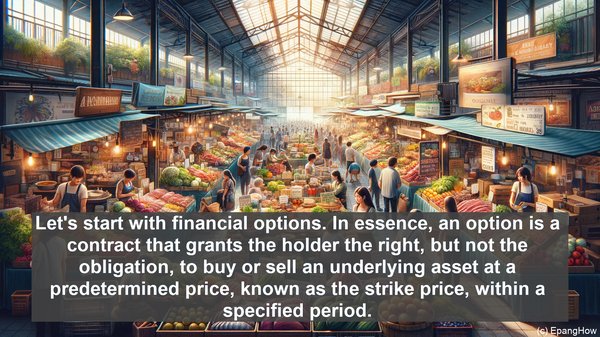Introduction: The Realm of Financial Derivatives
Hello everyone, and welcome to today’s discussion on financial derivatives. In the vast landscape of trading instruments, two prominent entities stand out: financial options and financial futures. While they may seem similar at first glance, a closer examination reveals distinct characteristics that make each of them valuable in their own right.

Defining Financial Options: The Power of Choice
Let’s start with financial options. In essence, an option is a contract that grants the holder the right, but not the obligation, to buy or sell an underlying asset at a predetermined price, known as the strike price, within a specified period. This flexibility is what sets options apart. It allows investors to capitalize on market movements without committing to a trade. For instance, a call option provides the right to buy, while a put option grants the right to sell. This ability to choose, or ‘optionality,’ is a key feature of financial options.

Understanding Financial Futures: Commitment and Obligation
On the other hand, financial futures are contracts that bind both parties to a transaction. Unlike options, futures come with an obligation to buy or sell the underlying asset at the agreed-upon price and date. This commitment aspect makes futures a more direct and potentially riskier instrument. They are often used for hedging purposes, where the goal is to mitigate potential losses or lock in future prices. For instance, a farmer might use futures to secure a selling price for their crops, ensuring stability in an unpredictable market.
The Role of Time: Expiry and Settlement
Another crucial distinction lies in the time element. Options have an expiration date, beyond which they lose their value. This limited lifespan adds an additional layer of complexity, as the value of an option is influenced not just by the underlying asset’s price, but also by the time remaining until expiration. Futures, on the other hand, have a fixed settlement date. On this date, the transaction is completed, with the buyer paying the agreed-upon price and the seller delivering the asset. This fixed timeline provides a clear endpoint for futures contracts.
Leverage and Margin: Amplifying Potential Gains and Losses
Both options and futures offer the potential for amplified gains or losses through leverage. Leverage, in simple terms, means controlling a larger position with a smaller investment. This can be advantageous, as it allows for greater exposure to market movements. However, it also magnifies the risks. To participate in options or futures trading, investors need to maintain a margin, a portion of the total contract value. This margin acts as a form of collateral, ensuring that both parties fulfill their obligations. The margin requirements for futures are typically higher, reflecting the higher commitment involved.
Market Dynamics: Options as a Window, Futures as a Mirror
Options and futures also differ in their relationship to the underlying market. Options can be seen as a window into the market, providing insights and opportunities. For instance, a surge in call option activity might indicate bullish sentiment. On the other hand, futures can be seen as a mirror, reflecting the market’s movements. As futures prices change, they influence the spot prices of the underlying assets. This interplay between futures and the underlying market adds a layer of complexity to futures trading.
